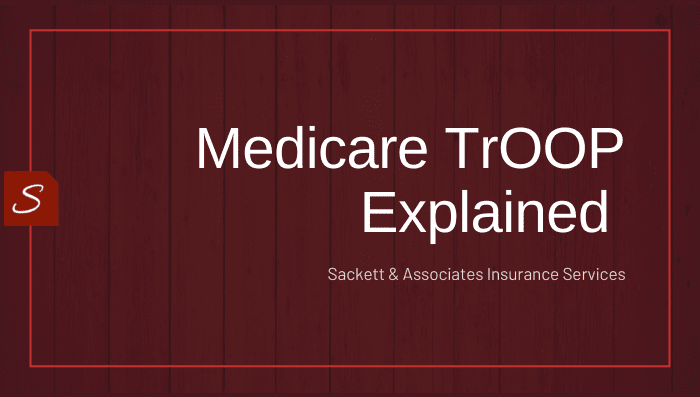Understanding Your Medicare Drug Plan's TrOOP

If you have one or more pricey prescriptions and are or will soon be eligible for Medicare, you may be thinking about signing up for a Medicare Part C or D plan in order to get prescription drug coverage. It’s important you understand not only how much a Medicare drug plan will help with the cost of your medications, but also how much you may still be expected to pay. One of the most important factors in this regard is what Medicare defines as your true out-of-pocket or “TrOOP” cost.
Defining Your TrOOP
Your Medicare health plan TrOOP refers to the maximum that you have had to pay for medications out of your own pocket during a given year. Your Medicare Part D plan’s “catastrophic coverage” will cover the costs of prescriptions after you have paid the amount that has been set for the TrOOP, which is a little over $7,000 for the current year. What this catastrophic coverage generally means in practice is that your Medicare drug plan was paying alimited amount toward your medications up until this point, but now will be paying for all approved prescriptions for the rest of the year. With a few exceptions, your relatively low co-pay and coinsurance costs will typically be your only obligations for the rest of the year after you have met your out-of-pocket maximum.
Keep in mind that your Medicare plan’s TrOOP limit is an annual measurement; this means that every year, the TrOOP amount starts back at $0 rather than continuing to accumulate from the previous year. On the other hand, your out-of-pocket total amount does continue to add up throughout the year even if you decide to move from one Medicare prescription drug plan to another within the same year. Your maximum TrOOP amount is tied to your costs during the year, not to the particular plan you were subscribed to at the start of the year.
Which Payments Do and Don’t Apply?
While most of the things that are included when calculating your annual TrOOP will seem obvious, you shouldn’t assume that all your costs will count, as there are some important exclusions. If you have any doubt about whether certain payments will be included toward your out-of-pocket limit, you should check with your plan provider or
health insurance brokers.
As you might expect, coinsurance and drug copays that you are responsible for throughout the year will contribute to your TrOOP, and so will your Medicare plan’s deductible. Any coverage gap or limitation that requires you to pay extra yourself, such as prices that are higher than the amount your plan will pay for approved medications, will also count towards your TrOOP total. Be sure to examine your plan’s drug formulary to check that a particular medication is approved, and if so at what level. As we will discuss in a moment, the question of whether a particular medication is approved will affect whether paying for it is considered part of your true out-of-pocket costs.
Generally, you can assume that payments that don’t actually come out of your own pocket will not count when calculating your yearly TrOOP. As an example, any amounts paid by public healthcare assistance programs like Medicaid/Medi-cal, CHIP or TRICARE don’t count when calculating whether you have reached your yearly annual maximum. Payments made by other third-party benefit programs, such as a drug company’s patient assistance scheme will also not count toward your out-of-pocket total. Some states have publicly-sponsored aid programs that help people pay for all types of prescriptions, and a few have programs geared toward helping pay for drugs related to a specific major diagnosis, like AIDS or cancer. The payments covered by these state benefits may count toward your annual out-of-pocket maximum, but you should double-check with your plan provider to be sure.
Some healthcare costs that you do actually pay for yourself nevertheless will not qualify to be included in your TrOOP calculation. If your Medicare Part C or D plan does not recognize or provide any coverage for a medication, then any amount you pay for that drug will likely not be included in your TrOOP cost for the year. Although supplements such as vitamins, herbal remedies, and diet aids are widely used, they are not included in your annual TrOOP amount. A prescription that was written in or obtained from a foreign country will also not be included; if you rely on a drug prescribed overseas, it would be best to get a U.S. doctor to write a new prescription for it if you can.
With the cost of prescription drugs continuing to escalate each year, it’s understandable that you would like to have some certainty about how much your medications are going to cost you. For more information about how Medicare health plans and the TrOOP guideline can offer some predictability, contact the experts at
Sackett Insurance today.




